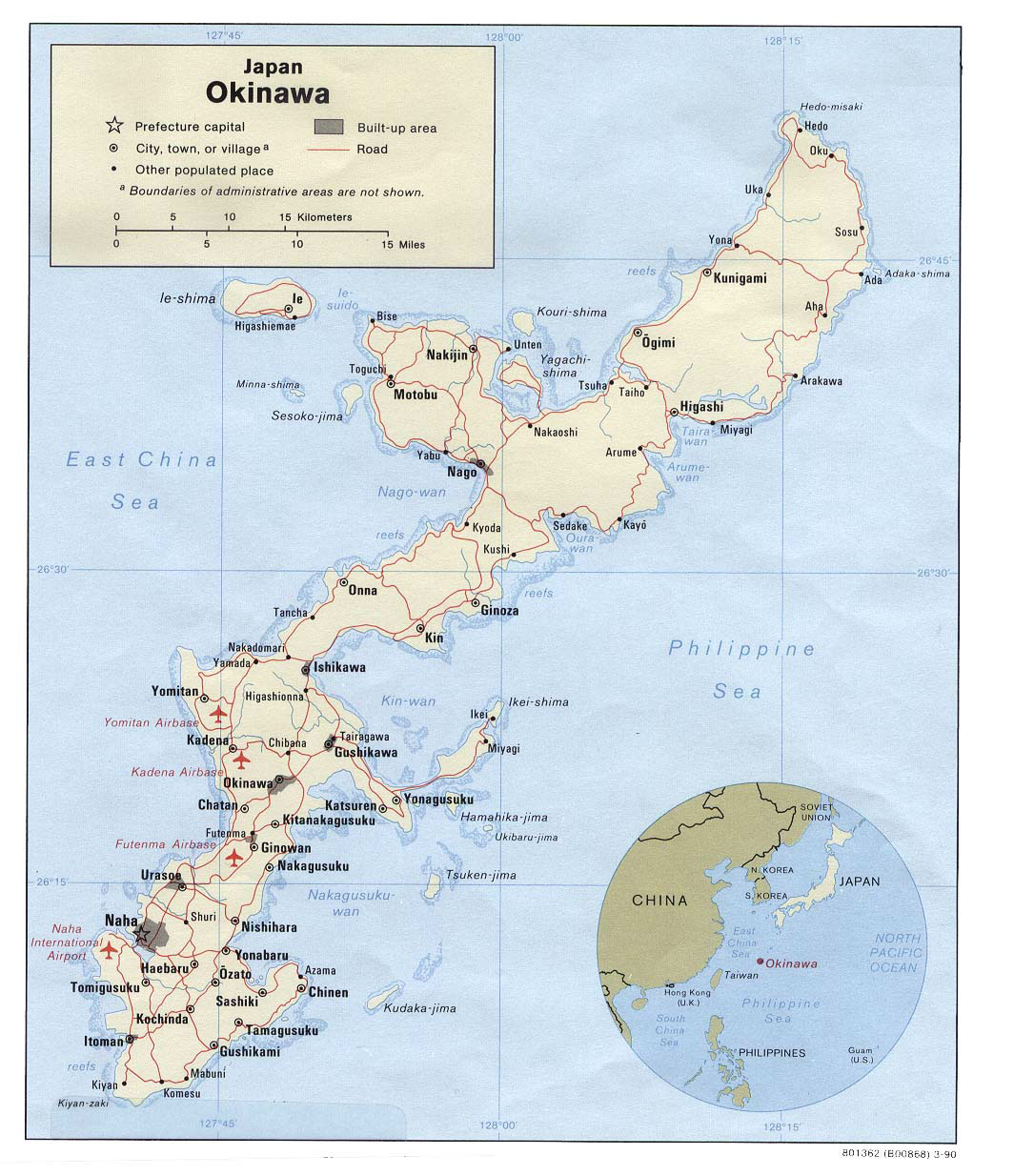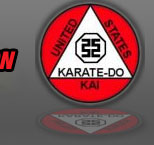
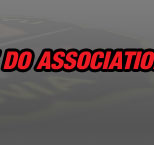
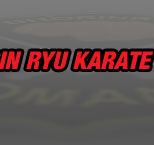
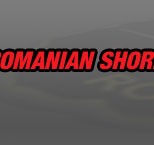
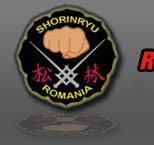

Okinawa History
In Japanese, "karate" means "bare hand", and the correct name is "Karate-Do", which means "the way of empty hand". Karate results from Okinawa, one of the Ryukyu islands which forms a chain of islands through which the passing from China to Japan is possible. Thanks to their geographical positions, they favoured the cooperation and meeting between Chinese and Japanese cultures. In 1609, The Okinawa Island was invaded by the Japanese army.
Naha - Te
|
Goju - Ryu
|
|||
( Shorei - Ryu )
|
Uechi - Ryu
|
|||
Kobayashi - Ryu
|
||||
Te
|
Shuri - Te
|
Matsubayashi - Ryu
|
||
( To - de )
|
( Shorin Ryu )
|
Shobayashi - Ryu
|
||
Matsumura Seito
|
||||
Tomari - Te
|
||||



In 1609, when the Satsuma clan's fighters invaded Okinawa, new drastic rules were given by Shogun Shimatsu against the practice of Martial Arts on the island. Now, moreover, the Martial Arts practice kept in secret became a vital necessity for survival and resistance alike. People were training themselves harder, in isolated places, on the shore, through the rocks, far away from towns and all foreign forces.
On one hand, the natives' desire of getting free from the oppressive forces, by the other hand, the fact that the practice, as well as the use of conventional weapons (swords, etc) was forbidden by law by the harbour occupants, lead to the vertiginous development of "empty hand" fight, that is the fight without using conventional weapons (Okinawa Te/Karate-Do).
These fight methods and techniques were brought by Chinese Emperors' ambassadors from Ming dynasty (1368-1661) and later they were reunited with the name Okinawa-Te, or To-de, name which had changed in Karate-do in 1936.
As the time went by, three big fight schools had developed such as: Naha-Te, Shuri-Te, and Tomari-Te. From these three schools derive all karate styles which are practiced nowadays in Japan and entire world. Even if karate styles had developed, and many fight methods and techniques had changed a bit, the essence stayed the same and transmitted itself from generation to generation in special, by kata (traditional forms).
In Naha port, in the merchants town, - Naha-Te School, in Shuri capital, the aristocrats town, Shuri School and in Tomari, the farmers town - Tomari-Te. Nevertheless, this style was not so developed, as it was in Naha-Te and Shuri-Te styles.
click ...
Shuri-Te is the current from which Shorin Ryu and its schools resulted: Kobayashi, Matsubayashi, Matsumura Seito, Sobayashi.
Sokon Matsumura was the first person who defined Shorin Ryu as a school. Being a remarkable figure of Okinawan political scene in 19th century, Sokon Matsumura studied both Chinese Martial Arts (in China) and Japanese sword (Jigen Ryu Kenjutsu). He defined for the first time the concept of Shorin Ryu and transmitted forward the following katas: Kushanku, Wanshu, Naihanchi (the originar form -108 forms), Chanan, Chinto, Seisan.
Matsumura was given the title "Bushi" by the sovereign from Okinawa, as recognition of his qualities.
Sokon Matsumura fought many times and it was said that he was invincible. His achievements in Martial Arts world helped many styles (Shorin Ryu, Shototkan Ryu and Shito Ryu).
We can say that all modern styles of karate which have the roots in Shuri-Te, had very much to gain thanks to this master.
Ankichi Arakaki
|
||
Chotoku Kyan
|
Shoshin Nagamine
|
Matsubayashi Ryu
|
Choki Motobu
|
founder
|
|
Taro Shimabuku
|
||
Choki Motobu
|
Chotoku Kyan
|
Shobayashi Ryu
|
Chosin Myagi
|
founder
|
|
Yasutsune Itosu
|
Chosin Chibana
|
Kobayashi Ryu
|
founder
|
||
Sokon Matsumura
|
Hohan Soken
|
Matsumura Seito
|
founder
|
His real name was Teruya Chikudon Peichin Kanga and he was born in Shuri. Being an offspring of Urazoe Uekata Kuan'an, he had the roots in Eki Clan. Sakugawa was intelligent, strong and very talented, being promoted as he was young at the Rykyu Royal Court. At the age of 30, he was sent to China as a Ryugakusei, in order to improve his physical and intellectual knowledge. As many other habitants of Okinawa, he was traveling in China to Fuzhou in order to learn Chinese Box. Sakugawa started to study Martial Arts since he was young, and at the beginning he studied with a monk from China.
Settled in Akata village, Takahara Peichin met later Kushanku, an army representative from China at the Royal Court Ryukyu. Kushanku taught Sakugawa, Kempo (Chinese Box) and the system of the five animals. Sakugawa remained student of Kushanku for six years, and after Takahara's death, he returned to Shuri and opened for the first time a public dojo. Throughout his students, the most remarkable were: Okuda, Makabe, Matsumoto, and Sokon "Bushi" Matsumura, the last one transmitted forward his art. He was considered to be one of the persons who brought Chinese Martial Arts in Okinawa.
Sokon 'Bushi' Matsumura
(1792-1887)
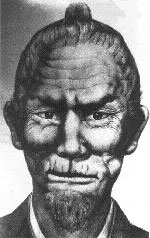
Kosaku Matsumora
(1829 - 1898)
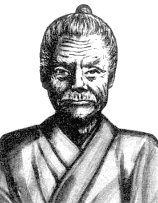
Kosaku Matsumora was born in Tomari village, on the Okinawan Island. Ever since he was 15 he begun to study karate with Master Teruya. The young Matsumora became one of the most remarkable students of his master.
Along with Teruya, he studied kata, which was practiced only in Tomari at that time (Rohai, Wanshu, and Wankan).
Master Matsumora had many students, such as Choki Motobu, known for his special qualities of fighter.
Yasutsune 'Anko' Itosu
(1830-1915)
To-Te Sakugawa Kanga
5 martie 1733 - 17 august 1815)
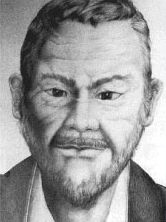
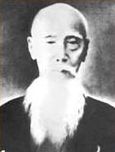
Yasutsune "Anko" Itosu was born in Shuri and became one of the most respected Martial Arts people, from Okinawa, in the XIXth century. Master Itosu was student of Sokon Matsumura and Kosaku Matsumura. One of the most important contribution in To-De art, was his unflinching faith, because he thought that a very important part was the character development of a person by paying attention to bunkai and several kata-s.
Itosu was probably one of the most important Masters in Shorin Ryu and had developed this style by adding the Pinan-s, Naihanchi Nidan and Sandan.
When he started to teach in scholar system, he realized that Naihanchi was a difficult kata for beginners, that was why he created Pinan Kata-s group. The creation of this group was based on another Kata, named Kusanku, plus a series of singular techniques added afterwards. He was also credited for the division of Kusanku Kata and Bassai in Sho and Dai.
On the beginning of XX century, Itosu became the first person who had introduced To-De in scholar system from Okinawa. This was an important movement in Martial Arts' evolution and popularization. This meant that Te-Do was brought to the public disposition. Among with this event, the access of man in the street to a martial arts series, was facilitated in a special manner, fact which affected positively the martial arts.
Master Itosu organized and systematized To-De, by establishing certain standard methods of learning.
Choki Motobu
(1871-1944)
Choki Motobu was born in Akahira village from Shuri region, Okinawa. He was son of Motobu Udun, which was a nobleman. Motobu had learnt some of techniques from his family, but, as his elder brother, Choyu, was the one who had the right to continue the martial tradition of the family, he had to look somewhere else the opportunity to study.
Choki started to train a lot to makiwara and used to lift heavy rocks in order to gain strength.
He proposed himself to become more powerful and good, and he dedicated himself to a series of hard trainings. Soon he became famous with the "Motobu zaru" nickname (Motobu, the monkey), thanks to his agility and speed. He became Anko Itosu's student.
Young Choky was spending his time challenging powerful man to fight. He learnt many things from these street fights, fights which most of the times he had gained.
Itosu wasn't agree with Motobu's street fights, so he expulsed Motobu from his dojo. The aggressive behavior of Motobu, brought him a negative reputation and soon, a series of Sensei would refuse him. But there was someone who liked Motobu's competitive spirit, and he received him as a student. This person was Kosaku Matsumora from Tomari. Here Motobu had learnt a Kata series, but he still kept his old occupation "street fighter".
Matsumora had refused to teach him kumite, but it is said that the student was watching some of his master's trainings through a hole in the fence.
The qualities which he acquired thanks to the many fights helped him, and he began to create his own kumite style. He managed to draw people attention, from Okinawa and Japan. One day, when he was in Kyoto, he was convinced by a friend, to participate in a tournament. There was a foreign boxer who was challenging people to fight. The boxer's behavior was haughty, but during 2 rounds Motobu shirked. Finally, Motobu got angry and punched the boxer right in the head and knock him out. The crowd astonished as they had never saw such a style. Although the technique which he applied to the boxer was a basic one, Motobu gained a special reputation, and he became a master overnight.
Soon he became an extremely respected person and he was invited to teach students from different universities. Many other Sensei sent their students to Motobu in order to learn something from his extraordinary fight style. It is said that Motobu was teaching his students Naihanchi Kata, and a series of throwing and plugs. It is said, that Choki Motobu full of confidence, had challenge his elder brother, Choyu, to fight. It is also said that Choyu threw Motobu, in such a manner in which he seemed to be a doll, and all of a sudden he became more humble and adopted in the same time many forms of Ti, which were specifics to his family.
In 1922, Motobu Master was helping Master Funakoshi in his activity of teaching young Japanese karate. Motobu had returned in Owinawa, and in 1936 he began to train with Master Kentu Yabu.
Later, Motobu realized the importance of tradition in trainings. He had always sustained the makiwara training and became very passionate of kata, as he was of kumite when he was young. He left Tokio for a short period of time, and returned to Okinawa in order to visit his Masters and to be sure that at his turn was teaching his students kata correctly.
Then he returned back to Tokio, and continued his activity with his students. Short time before The Second World War, Master Motobu returned to Okinawa. He died in 1944 from a stomach disease.
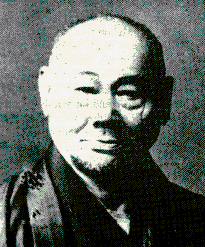
Chotoku Kyan
(1870-1945)
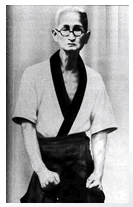
He was the third son of a nobleman, descendents of king Shoshei. He began to study karate with his father Khofu Kyan, When he was 20, his father considered good for him to practice karate regularly, in order to improve his physical performances, as he was a frail young. In that time, In Okinawa had existed three grand masters, Sokon Matsumura and Anko Itosu in Shuri and Peichin Yara in Naha. Chotoku's father asked them to teach his son. Kyan learnt karate rapidly Tomari-te and Shuri-Te. In a couple of years he was able to find the secret of karate in order to use it efficiently by a little man as he was.
Chotoku Kyan's favourite kata's- Passai, Chinto and Kusanku, which he had learnt from Shimabuku and Arakaki.
Choshin Chibana
(1885-1969)
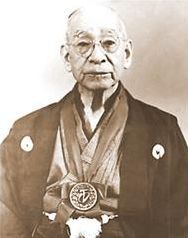
He was born on 5th of June 1885 in Tottori-cho, one of Shuri's districts. At the age of 15, in 1900, he began to study karate with Master Itosu until Itosu passed away, in 1915.
At the age of 34, he opened his own dojo in Torihori, where he was teaching karate's secrets. Later he opened his second dojo in Kumojo, district of Naha town.
Since February 1954 till December 1958, he was the karate instructor of Police Department in Shuri. In 1956 he was named the president of Okinawa Karate Do Association.
His reputation as a master in karate was recognized not only in Okinawa but in Japan too. In 1957, the Nippon Martial Arts Federation conferred him the title of Hanshi (Grand Master).
In 1969, as a recognition of his devotement in learning and practice of okinawan karate-do he received the Worth Order of king of Japan.
Ankichi Arakaki
(1899-1927)

Ankichi Arakaki was born in November 1927, in Akata, Shuri, Okinawa. He had 10 brothers and he was the eldest. He began to study karate at an early age, he was learning from Shinpan Gusukuma, his teacher from primary grades, then from Chomo Hanashiro, when he was in high-school. This was before he intensified his trainings with the founder of Kobayashi Shorin Ryu style, Chosin Chibana.
In 1921, after graduating the military service, he moved to Kadena. Unfortunately, he was so affected by his father death and by the fact that his family business were getting worse thanks to The First World War, that he got ulcer. He died at the age of 28, but in his short life his contribution in Karate Do Okinawa development was significant.
Shoshin Nagamine
(1907-1997)
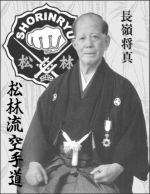
Shoshin Nagamine was born on 15th of July 1907, in Tomari-son, Naha, Okinawa. He began to study karate at the age of 17, in Naha, with Chojin Kuba. At the age of 19, he started to practice Shorin with Taro Shimabuku. Shimabuku recommended him to study with Ankichi Arakaki, who revealed him the whole connection between karate and okinawan culture and opened his mind for the beauty of karate as an art. Although Arakaki had lived only 28 years, his influence in shorin development as an art, was major. The second grand master with whom he studied, was Chotoku Kyan, from whom he learnt kata. The third master was Choki Motobu from whom Nagamine learnt kumite. He is the founder of Matsubayashi Shorin Ryu style.
Ansei Ueshiro
(1933-2002)
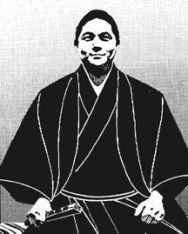
Ansei Ueshiro was born in 1933 in Okinawa, descendent of the old okinawan noble classes. World champion in 1958 and 1962, Ansei was one of the most important students of Shosin Nagamine. He was the one who revealed Shorin Ryu style in USA. He was considered to be one of the most important people who practiced kata with the bo and the founder of Fukiugata San.
Nabe Matsumura
(1860-1930)
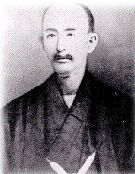
Nabe Matsumura had brought in the modern age the secrets of the old Shorin Ryu style. The nephew of Sokon Matsumura, was considered to be the best instructor of his time. He had only a student, Hohan Soken.
Hohan Soken
(1889-1982)
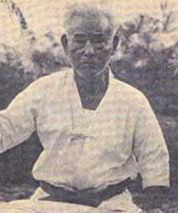
Hohan Soken was born in Okinawa in 1882 and he was the grandson of Sokon "Bushi" Matsumura. At the age of 13 he started to train with his uncle, Nabe Matsumura, descendents of the old samurai from Okinawa. He was the founder of Matsumura Seito Style (Matsumura Orhtodox).
Yuichi Kuda
(1928-1999)
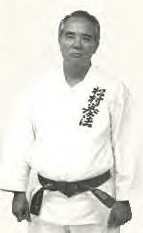
Yuichi Kuda was born in Okinawa and he was descendent of the old okianwan samurai. He was initiated in karate for the first time by his father in the bojutsu style. At the age of 10 he started to study with an employee from Marine, named Yamashiro.
In 1960 he became student of Shigeru Nakamura, and after Nakamura's death, in 1970 he became student of Hohan Soken and grand master in Shorin Ryu style. After Hohan Soken's death, Kuda created his own organization, Matsumura Kempo Shorin Ryu Karate.
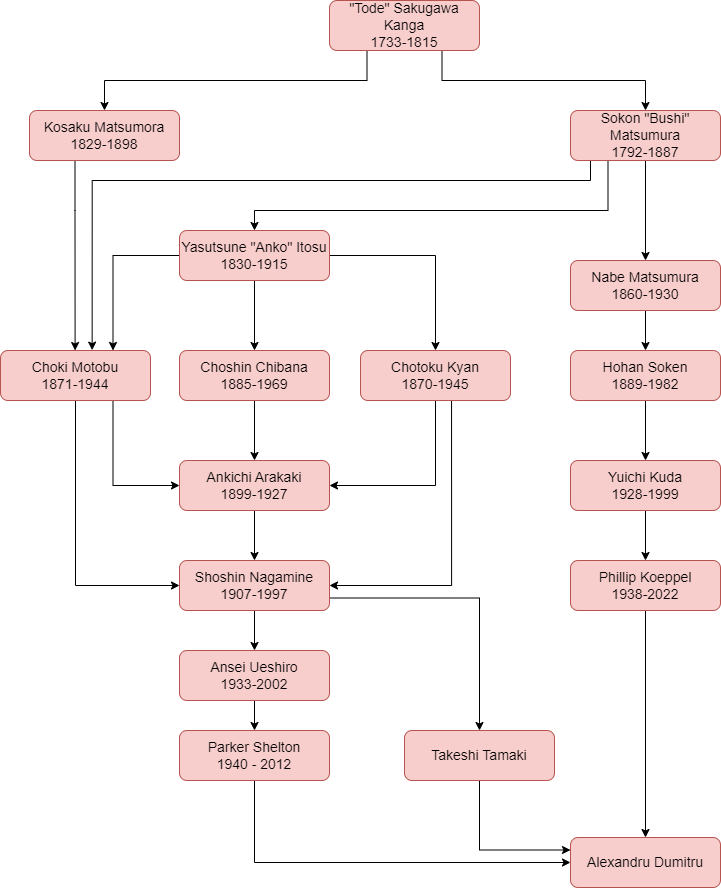

©Copyright Asociatia Shorin Ryu Karate Do Romania.All Rights Reserved 2007




